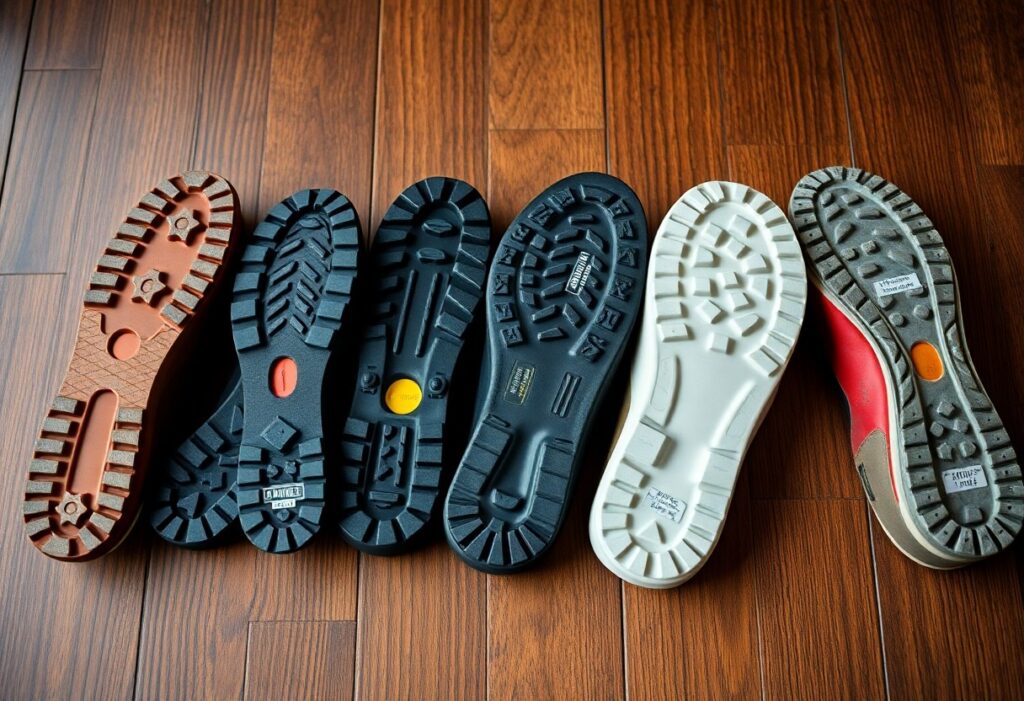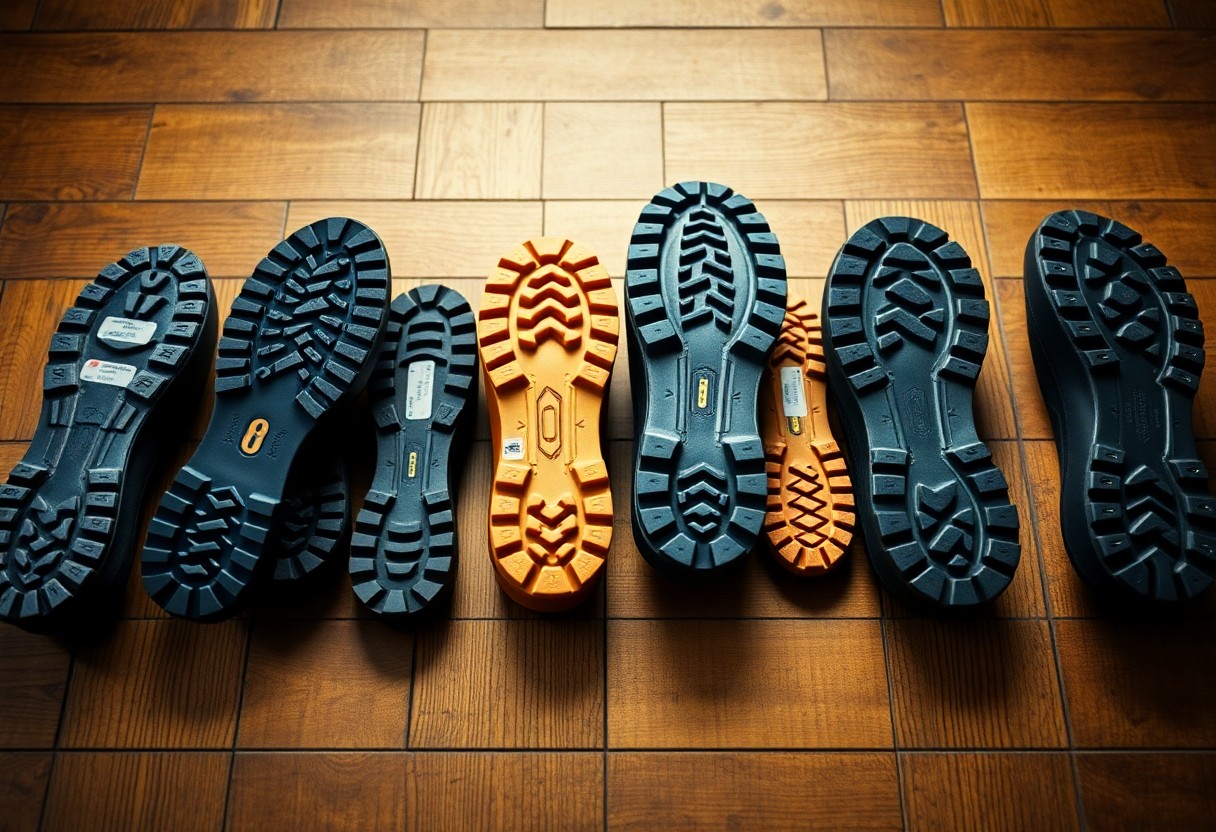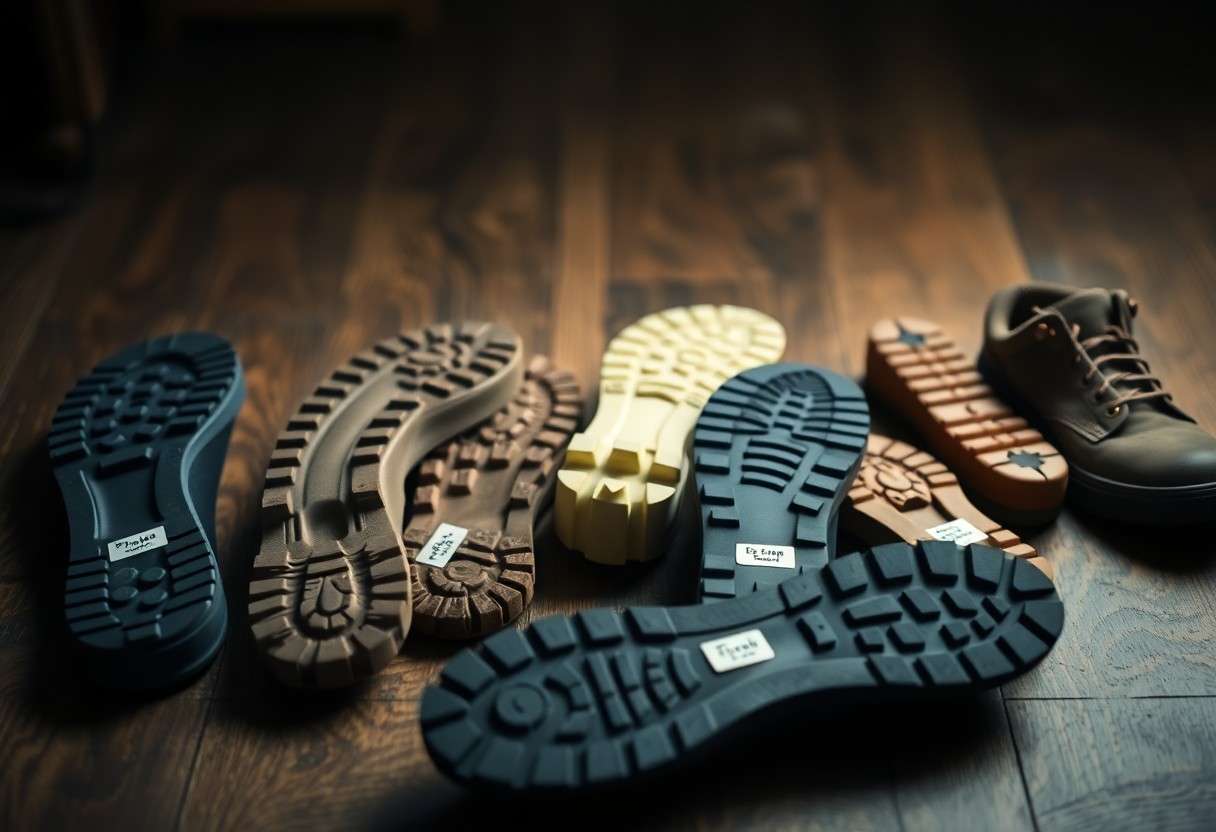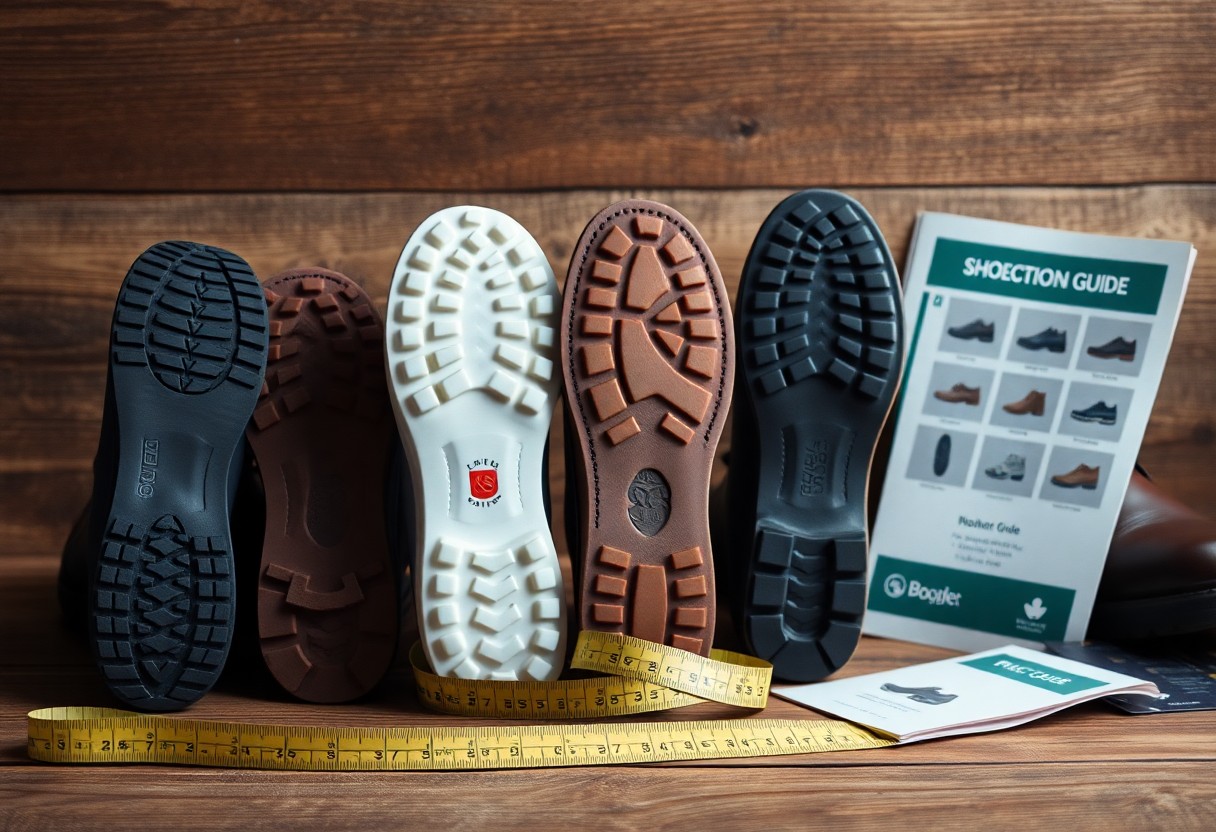
When it comes to choosing the right footwear, many people often overlook the vital significance of shoe soles. This crucial element greatly impacts your overall comfort, stability, and safety while walking. The sole type you select can dramatically influence your ability to maintain stable footing on slippery surfaces, helping you avoid hazardous slips, as well as ensuring you enjoy long-lasting comfort instead of facing premature wear. With a variety of options available, including classic leather soles, innovative rubber compounds, single leather, double leather, and hybrid soles, each type offers distinct benefits tailored to meet various needs. This detailed guide is designed to clarify the unique features of different sole types and help you select the ideal footwear option for your specific needs, whether for professional environments, casual outings, or adventurous outdoor activities.

Unlock the Performance Benefits of Leather Soles for Exceptional Footwear
Choosing leather soles can significantly enhance both the style and functionality of your footwear. These timeless soles are celebrated for their excellent breathability and natural comfort, as they adapt to the contours of your feet over time, offering a customized fit. While they do require more maintenance compared to synthetic options, leather soles provide superior ground feel, making them an ideal choice for formal occasions where elegance is essential. Understanding the specific advantages of leather soles empowers you to make an informed decision, enhancing not only your wardrobe but also your overall walking experience.
Embrace Timeless Sophistication with Single Leather Soles for Formal Shoes
Soles made from a single layer of leather represent the most classic choice for sophisticated dress shoes. These soles are crafted to deliver remarkable flexibility and an immaculate appearance, elevating your style for formal events. While they provide better breathability compared to rubber alternatives, it is important to exercise caution in wet conditions to avoid potential damage. By opting for single leather soles, you not only adopt a refined aesthetic but also benefit from the comfort that comes with high-quality craftsmanship.
Enhance Footwear Longevity with Resilient Double Leather Soles
Featuring two layers of leather, double leather soles offer you enhanced durability and superior insulation against cold surfaces. Although they may feel slightly stiffer than single leather soles, their design provides extra protection for your feet across various conditions. Consequently, double leather soles significantly outlast single soles, representing an excellent investment for everyday wear. They are particularly beneficial for individuals with a heavier build or those frequently engaging in outdoor activities, though they do require a longer break-in period for optimal comfort.
By choosing double leather soles, you are investing in a solution that marries longevity with performance, ensuring your footwear can withstand the demands of daily use while maintaining a fashionable appearance.
Optimize Comfort and Durability with HAF (Half and Full) Soles
HAF soles, which combine single leather in the waist and heel with double leather in the forepart, provide you with the best of both worlds. This innovative design guarantees that you receive additional durability where it is most crucial while still preserving a sleek and elegant profile. The unique construction of HAF soles promotes balanced weight distribution and enhanced comfort, effectively safeguarding high-wear areas without compromising the shoe’s sophisticated look. However, it is essential to ensure that your cobbler incorporates appropriate heel compensation to achieve optimal balance tailored to your feet.
Explore the Flexibility of Natural and Mixed Soles for Daily Footwear
Natural and mixed soles present a versatile combination of comfort and durability. These soles incorporate organic materials such as cork, natural rubber, or leather alongside synthetic components to create adaptable and high-performing footwear solutions. When selecting among the various natural and mixed soles, consider your specific requirements related to grip, weight, and resistance to environmental factors. Gaining insight into these elements will empower you to make an educated choice that aligns with your lifestyle and activities.
Discover the Lightweight Benefits of Nitrile Cork Soles
In addition to traditional rubber options, nitrile cork soles provide a lightweight alternative that retains exceptional durability. These soles, composed of a blend of cork and nitrile rubber, are 30% lighter than standard rubber soles, making them a preferred choice for American footwear where comfort is a priority. Available in both smooth and treaded patterns, nitrile cork soles are perfect for those who prioritize lightweight footwear without compromising on performance. Opting for these soles allows you to navigate your daily activities with ease and style.
Indulge in Relaxed Comfort with Natural Crepe Soles
Natural crepe soles, crafted from pure rubber, deliver exceptional comfort thanks to their soft and cushioning properties. These soles are best suited for casual footwear and can offer varying levels of grip depending on the surface conditions you encounter. While crepe soles provide superior comfort for everyday wear, they do have some drawbacks. Their soft composition results in a wear rate that is approximately 40% faster than traditional rubber soles, and their grip may become unpredictable on wet surfaces. Therefore, while many users appreciate the comfort they provide, it’s vital to consider the potential for more frequent replacements.

Harness the Benefits of Rubber Soles for All-Weather Performance
Rubber soles are recognized for offering excellent grip and water resistance, making them standout options for shoes and boots. Their performance in wet conditions makes them an ideal choice for daily wear across diverse weather scenarios. Rubber soles not only provide remarkable durability but also require less maintenance compared to leather options, although they may feel warmer on your feet during hot summer months. The practical advantages of rubber soles make them a smart choice for anyone seeking reliable performance and comfort.
Achieve the Perfect Blend with Rubber Topy Soles
Rubber Topy soles serve as an outstanding compromise between leather and rubber soles, granting you the best of both worlds. You benefit from the classic appearance of leather soles while enjoying enhanced grip and durability. A thin rubber layer is bonded to a slightly sanded leather sole, effectively extending the lifespan of your footwear by up to 50%. This combination allows you to appreciate the aesthetic allure of leather without sacrificing functionality, making Rubber Topy soles a wise investment for your footwear collection.
Combine Style and Practicality with City Rubber Soles
By opting for city rubber soles, you achieve a sleek dress shoe appearance without sacrificing practicality. These thin rubber soles closely mimic traditional leather soles while providing superior traction and waterproof capabilities. Increasingly favored in contemporary dress shoes, city rubber soles not only enhance the visual appeal of your footwear but also improve durability compared to leather soles, necessitating less frequent resoling. Ideal for urban settings, these soles can effortlessly navigate concrete sidewalks and occasional rain, ensuring you remain stylish and comfortable.
Enhance Longevity with Dainite and Studded Soles
Among rubber options, Dainite and studded soles offer maximum durability and traction. Their distinctive studded pattern ensures reliable grip while maintaining a formal appearance, making them particularly suitable for business casual footwear and dress boots. While Dainite soles are highly resistant to wear, it’s essential to note that they may become slippery in freezing conditions. User experiences may vary, as some find them firmer than other sole types. However, for everyday use in moderate conditions, these soles generally outlast traditional leather soles by 2-3 times, making them an excellent choice for those prioritizing durability.
Understand the Key Performance Features of Shoe Soles
Your selection of shoe sole is paramount in influencing your daily comfort and safety. Various types of soles offer distinct levels of grip, shock absorption, and flexibility, each serving specific functions that range from preventing slips on wet surfaces to alleviating foot fatigue during long periods of standing or walking. Gaining knowledge about these performance features can assist you in choosing the right sole type for your unique needs, ultimately enhancing your overall footwear experience.
Assess Durability Factors in Sole Materials
The lifespan of different sole materials can vary significantly in terms of wear resistance. Generally, rubber compounds outlast leather soles by 3-4 times, while nitrile cork serves as a balanced middle ground. Factors like material density and tread pattern play crucial roles in determining how long your soles will endure. Being aware of these durability factors empowers you to make cost-effective footwear decisions tailored to your specific lifestyle.
Evaluate Weather Resistance for Optimal Sole Performance
Factors such as water resistance, temperature tolerance, and traction are vital in determining how your soles perform across various conditions. Generally, rubber soles offer superior grip in wet environments, while leather soles excel in dry conditions. It’s important to remember that temperature changes can significantly affect sole performance. Some rubber compounds may become dangerously hard in freezing temperatures, whereas others maintain their flexibility. Your local climate should guide your selection: city rubber soles are best suited for mild wet conditions, while specialized winter soles provide enhanced safety in snowy or icy environments.

Your Ultimate Guide to Selecting the Ideal Shoe Sole
It’s crucial to acknowledge that not all shoe soles are created equal; your selection should align with your individual needs and preferences. The appropriate sole type can significantly influence your comfort, safety, and the durability of your footwear. This comprehensive guide aims to assist you in identifying the most suitable sole type based on your lifestyle, activities, and environmental conditions.
Identify Your Daily Activities When Choosing the Right Sole
When selecting a sole, essential factors to consider include your daily activities and the walking surfaces you frequently encounter. For office settings, thin leather or city rubber soles are ideal. In contrast, industrial environments benefit from robust rubber or studded soles that enhance protection. For outdoor activities, it’s crucial to focus on grip requirements and durability needs. Understanding your primary usage will empower you to narrow down the best options available for your needs.
Evaluate Climate Influences for Optimal Sole Performance
In addition to weather conditions, variations in temperature can have a substantial impact on the performance of shoe soles. Here are some key considerations:
- Wet conditions – rubber soles provide superior grip
- Cold weather – thicker soles offer better insulation
- Hot climates – breathable leather soles are ideal
- Variable weather – hybrid soles deliver versatility
Understanding your local climate patterns is essential to selecting the most appropriate sole type for your footwear.
Moreover, it’s crucial to consider how different sole materials react to varying weather conditions:
- Leather soles require special care in wet environments
- Rubber soles become very hard below 0°C
- Nitrile cork provides a good balance in moderate conditions
- City rubber soles offer year-round versatility
Being aware of these characteristics ensures that your footwear will perform well in any season.
Essential Maintenance and Care for Longevity of Shoe Soles
To guarantee the longevity and performance of your shoe and boot soles, regular maintenance is crucial. The lifespan of your soles highly depends on proper care, which includes cleaning, drying, and protective treatments. Each sole material has specific care requirements; for instance, leather soles need waterproofing, while rubber soles benefit from routine debris removal.
Implement Effective Cleaning Strategies for Your Footwear
A well-maintained sole begins with a consistent cleaning regimen. To uphold the integrity of your footwear, you should:
- Use a soft brush to gently remove dirt
- Clean with mild soap and water
- Apply specialized cleaners that cater to specific materials
- Ensure complete drying after the cleaning process
Recognizing the appropriate cleaning methods for your particular sole type will help prevent damage and extend the lifespan of your footwear.
Adopt Preservation Techniques for Extended Sole Life
To prolong the lifespan of your soles, consider implementing the following practices:
- Rotate your footwear daily to allow for proper airing
- Utilize shoe trees during storage to maintain shape
- Apply protective sprays as necessary for added safeguarding
- Regularly monitor for wear patterns to detect early signs of deterioration
By being vigilant about the early signs of wear, you can take proactive measures to prevent irreversible damage to your footwear.
It’s crucial to note that preservation techniques can vary significantly based on the sole type:
- Leather soles necessitate waterproofing every 3-4 months
- Rubber soles should be regularly checked for cracks
- Cork soles require protection against moisture
- Crepe soles should be kept away from extreme heat
Understanding the specific needs of your sole type will ensure optimal maintenance and longevity of your footwear.
Make Educated Choices for Your Footwear Requirements
The selection of your shoe sole is instrumental in determining your comfort and overall performance. It is vital to align your chosen sole type with your individual needs—whether that entails selecting leather soles for formal events or rubber options for unpredictable weather scenarios. Factors such as your lifestyle, walking surfaces, and local climate should inform your choice. For instance, a single leather sole lends elegance to dress shoes, while Dainite or city rubber soles enhance grip and durability. By deepening your understanding of the various sole types and their distinct benefits, you can make informed footwear decisions that cater to your daily needs and personal preferences.
Frequently Asked Questions about Shoe Soles
Q: What are the key differences between leather and rubber soles?
A: Leather soles are renowned for their excellent breathability and ability to conform to your feet over time, making them suitable for dress shoes. They perform optimally in dry conditions but require careful handling in wet weather. In contrast, rubber soles provide superior water resistance and grip, typically enjoying a longer lifespan and suitability for varied weather conditions. Additionally, rubber soles are generally more affordable and demand less maintenance compared to their leather counterparts.
Q: How do I determine the right sole type for my daily needs?
A: To select the appropriate sole type, consider the primary environments and activities in which you will use them. For formal office settings, leather soles are ideal, while rubber soles are better suited for outdoor walking and wet conditions. For versatile applications across different weather scenarios, studded soles like Dainite serve as an excellent option. For casual wear, crepe soles offer great comfort but tend to wear out more quickly. Tailor your sole choice to your most frequent activities and environmental conditions to ensure optimal performance.
Q: What advantages do double soles have over single soles?
A: Single soles provide greater flexibility and a sleeker profile, making them perfect for dress shoes. In contrast, double soles are designed for enhanced durability and improved insulation against cold and wet conditions. They are suitable for casual shoes and boots, although they typically require a longer break-in period. While double soles may add some weight to the shoe, they also offer additional protection for challenging terrains.
The Article Guide to shoe and boot sole types features benefits and how to choose the right one appeared first on My Shoes Finder
The Article Shoe and Boot Sole Types: Features, Benefits, and Selection Tips Was Found On https://limitsofstrategy.com


You raise such an important point about the significance of shoe soles! I never used to think about how much they affect my daily comfort until I had a pair of shoes with poor soles—what a difference it makes. I’ve recently tried a pair with a hybrid sole for my outdoor excursions, and I love how they grip on different terrains without sacrificing style. It’s fascinating how footwear can intersect with our lifestyles; the right sole can make all the difference in our confidence and safety, especially on slippery sidewalks during rainy seasons. Has anyone else experienced a noticeable change in their comfort or stability after switching sole types? I’d love to hear about your experiences!